Ecosystems worldwide are experiencing unprecedented conditions due to human activities, demanding new strategies to protect biodiversity.
In our new paper, out now in Nature Ecology and Evolution, we show that highly novel conditions are present across almost two thirds of the worlds surface.
We mapped a combination of human activities, climate change, alien plant introductions, and historic mammal extinctions, finding that all climate zones and biomes are experiencing unprecedented ecological novelty.
Crucially, we find unprecedented conditions even in remote and protected areas. This means that many approaches to conserving nature may no longer work in the face of such novelty.
By pinpointing the main forces behind these shifts we can develop better strategies to manage our shared environment.
Read the article here:
Widespread ecological novelty across the terrestrial biosphere | Nature Ecology & Evolution
Two new 2024 studies explore the ecological impacts of the alien Chinese windmill palm (Trachycarpus fortunei) in the Southern European Alps. Started by Vincent Fehr during his PhD studies at Aarhus University, with contributions from supervisors Jens-Christian Svenning, Robert Buitenwerf and Swiss collaborators, the research sheds light on this species’ role in transforming ecosystems:
Plant Community Impacts: Trachycarpus reduces native plant diversity in mesic–moist forests, particularly in herb and shrub layers, but has minimal effects in the more widespread mesic–dry forests.
Read more in Applied Vegetation Science
Arthropod & Decomposition Effects: Arthropod communities shift under Trachycarpus, with fewer herbivore species likely due to the low nutritional value of palm leaves. Dense palm stands also accelerate litter decomposition, likely by creating favorable microenvironments.
Read more in Global Ecology and Conservation
These findings highlight Trachycarpus’s role in #laurophyllisation and the importance of adaptive management for these evolving ecosystems. Laurophyllisation refers to the biome shift from temperate deciduous forests to evergreen broadleaved forests, driven by climate warming in synergy with biotic globalization and land-use changes.
Collaborative research offering new insights into the dynamics of novel ecosystems!

New Research Shows the Pathway to Saving Southeast Asia's Forests
A recent study, published in the journal Nature Sustainability, has unveiled the critical importance of mitigating both climate and land-use changes to preserve the diverse tree species of Southeast Asia. The study, led by Dr. Sean E. H. Pang, a researcher at Aarhus University’s Center for Ecological Dynamics in a Novel Biosphere (ECONOVO), presents alarming projections for the region's biodiversity if current global trends continue unchecked.
Key Insights:
What This Means for Conservation: The study highlights the urgent need for conservation strategies that address both climate change and land-use impacts simultaneously. Dr. Pang emphasises that a narrow focus on mitigating only one of these global challenges could lead to unintended consequences, worsening the situation for Southeast Asia’s forests.
The findings underscore the necessity of striving for the SSP1–2.6 pathway, which promotes sustainable development and offers the best outcomes for tree species conservation. This approach involves reducing greenhouse gas emissions, protecting remaining forest areas, and implementing sustainable agricultural practices.
A Call for Targeted Action: Conservation efforts must be tailored to the specific needs of different species groups, particularly those in high-risk areas like the Sundaic region. Effective measures include protecting existing habitats, reforestation, and integrating conservation with sustainable land management practices.
Dr. Pang’s research provides a vital roadmap for policymakers and conservationists to prioritize actions that will safeguard Southeast Asia’s rich biodiversity. As the region faces the dual threats of climate change and land-use alterations, this study offers critical guidance on how to navigate these challenges.
For Further Information: The full study, "Conserving Southeast Asian trees requires mitigating both climate and land-use change," can be accessed in Nature Sustainability at https://www.nature.com/articles/s41893-024-01417-4.
Edited by Jens-Christian Svenning (Aarhus University), Melodie A. McGeoch (Monash University), Signe Normand (Aarhus University), Alejandro Ordonez (Aarhus University), and Felix Riede (Aarhus University), this issue explores the dynamics of biodiversity in an era of rapid environmental change and increasingly unprecedented conditions.
This special issue is the outcome of the symposium held in 2022 at the Aarhus Institute of Advanced Studies (AIAS), focusing on the following key subthemes:
1. **Functioning and Stewardship of Emerging Novel Ecosystems**: Investigating the dynamics of ecosystems under uncharted conditions and emphasizing the need for understanding these emerging ecosystems.
2. **Biodiversity Projections Under Global Change**: Predicting ecological shifts in the Anthropocene and highlighting the necessity of adaptive approaches to minimize negative impacts.
3. **Advancing Methods to Study Ecosystem Dynamics**: Developing new methods to study ecosystem dynamics under increasing biosphere novelty.
4. **Integrating Human Perspectives**: Emphasizing the importance of including human perspectives in understanding, forecasting, and managing novel ecosystems.
In their introductory article, "Navigating ecological novelty towards planetary stewardship: challenges and opportunities in biodiversity dynamics in a transforming biosphere," the editors provide a comprehensive overview of the issue's themes, outlining the pressing need for innovative strategies in biodiversity management. This article sets the stage for the in-depth discussions and research findings presented throughout the issue.
This issue provides critical insights for scientists, policymakers, environmental managers, and conservationists aiming to navigate and mitigate the complexities of our transforming biosphere.
For more information and to access the full issue, visit: royalsocietypublishing.org/toc/rstb/2024/379/1902). To read the introductory article, visit:
https://royalsocietypublishing.org/doi/10.1098/rstb.2023.0008.The article summed up:
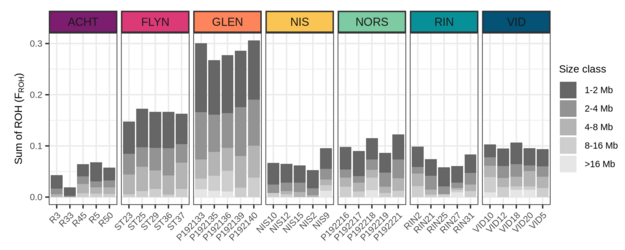
The article summed up:
Trophic rewilding is gaining momentum as a method of ecological restoration
However, we currently have little integration between rewilding and functional ecology, traditionally being focused on the effects of large mammal reintroductions on species (taxonomic) diversity
In this paper, we review the evidence for the ways in which large mammals influence the expression of plant functional traits (e.g. plant height, leaf nitrogen content, leaf dry matter content), in order to build a set of hypotheses about how rewilding may effect the functioning of plant communities
We conduct a case study of the European flora, to investigate the broad relationship between plant traits and a species ability to cope with herbivory
We extend these ideas to plant invasions, and hypothesise how more complex assemblages of herbivores (and carnivores) may be able to reduce the dominance of individual species and promote functional diversity of ecosystems
The traits of plant and animals provide a pathway to generality in scientific findings, which is of great importance for scaling up restoration approaches across a diversity of environments and in the face of widely emerging human-created novel ecosystems
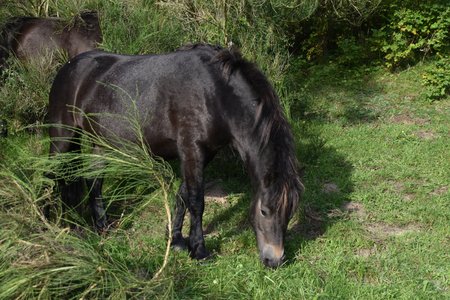
Rewilding is part of the solution in delivering restoration targets, therefore land managers, policymakers and funding organisations require transparent tools for prioritisation of where to set aside land for rewilding.
We developed a systematic rewilding prioritisation framework to enable systematic planning of rewilding.
We applied this framework across Denmark and produced prioritised lists of sites, which were then used as a tool in the political process of designating 15 rewilding sites across Denmark.
This study illustrates how to apply a systematic prioritising framework at the national level, supporting the delivery of national and international biodiversity strategies.
Article summary:
Trees are pivotal to global biodiversity and nature’s contributions to people, yet accelerating global changes threaten global tree diversity. We assessed the exposure to change in six anthropogenic threats over the last two decades for 32,090 tree species. We estimated that over half (54.2%) of the assessed species have been exposed to increasing threats. Only 8.7% of these species are considered threatened by the IUCN Red List, whereas they include more than half of the Data Deficient species (57.8%). These findings suggest a substantial underestimation of threats and associated extinction risk for tree species in current assessments. We also map hotspots of tree species exposed to rapidly changing threats around the world.
Link to layman summary of the paper
The article summed up:
Using genomic data and population genetics, we reconstructed population size trajectories of 139 living megafauna species, revealing a decline in population size for the majority of these species between 32,000 and 76,000 years ago.
Contrary to the hypothesis that the megafauna's decline was primarily due to climate change, we conclude that human activity has been a major driver of megafauna population sizes for at least 50,000 years.
As a consequence, megafauna census, biomass, and energy turnover have been reduced by 92–95% over the past 50,000 years.
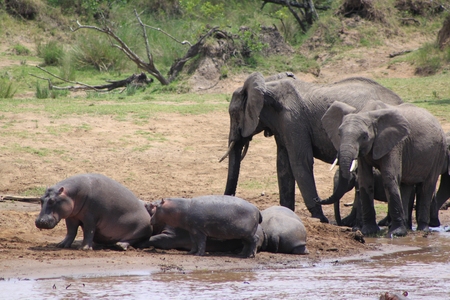
In Europe, the longstanding view that closed forests naturally would dominate under temperate climate conditions has been challenged by the hypothesis that large herbivores and other disturbance agents would have created a more open, wood-pasture landscape.
The choice of either (closed forest or wood-pasture) as a reference point for decision-making affects the output of contemporary management strategies. Yet, a wide-scale, quantitative assessment of vegetation structure in European landscapes before modern humans has previously been missing.
We used the pollen-based reconstruction method REVEALS to discern vegetation structure across Europe during the Last Interglacial period (129,000 – 116,000 years ago), before the arrival of Homo sapiens to the continent. We found that open and light woodland vegetation were prevalent features of the temperate forest biome, indicating a heterogeneous woodland landscape with substantial open elements.
These results challenge previous assumptions of a predominantly closed forest environment during interglacial periods. Our findings not only demonstrate the presence of diverse, open habitats but also highlight the importance of processes that uphold open environments, such as disturbances by large megafauna. This has important implications for our understanding of the evolutionary ecology of Europe’s native biota as well as for restoration and rewilding efforts within this biome and across the continent.
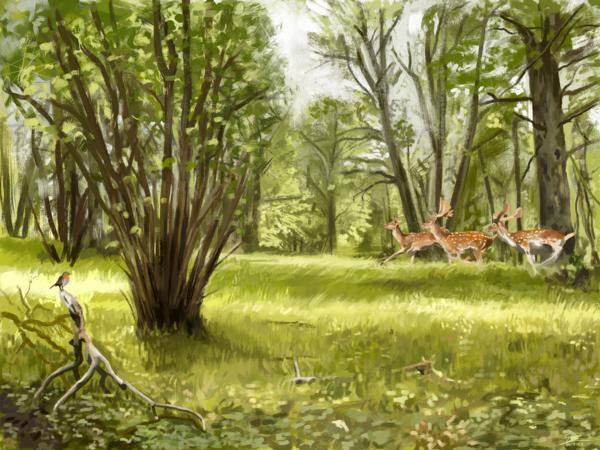
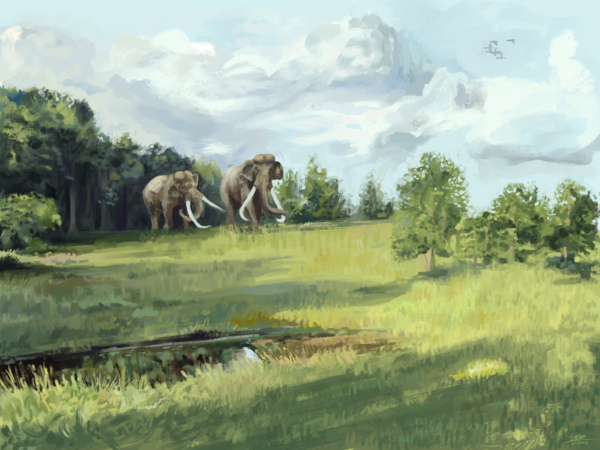
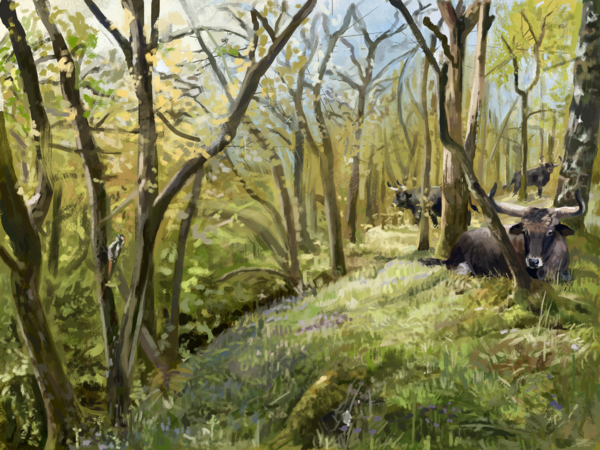
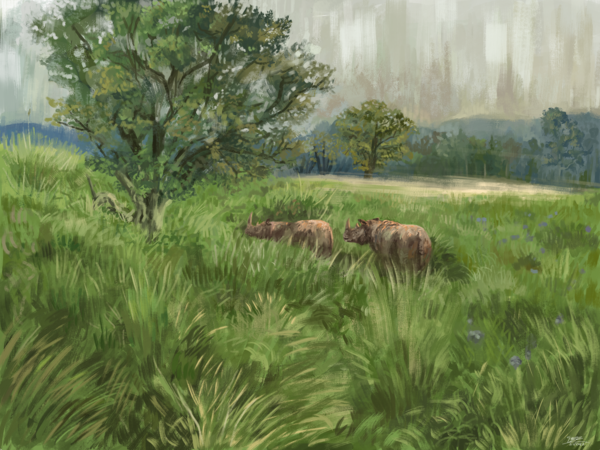
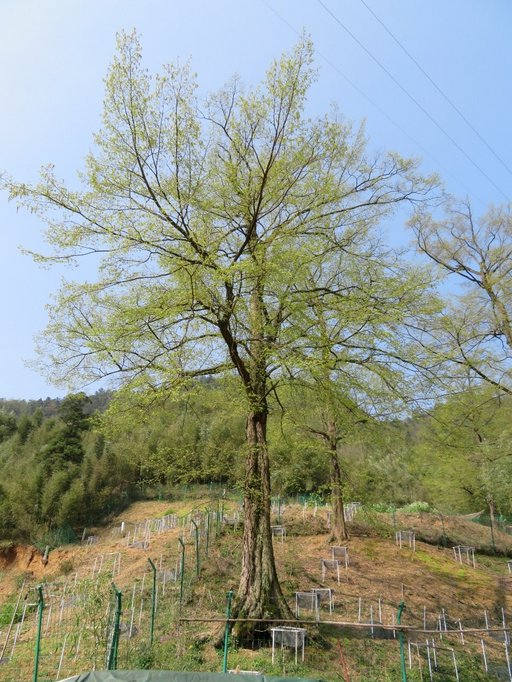
Link to paper: Climate change and land use threaten global hotspots of phylogenetic endemism for trees | Nature Communications
Across the world, tree species are confronting unprecedented anthropogenic pressures, heightening the risk of extinction, particularly for species with limited ranges and distinctive evolutionary histories. This crisis poses a grave threat not only to the global tree species diversity but also to the phylogenetic diversity of tree flora. In response to this looming threat, a comprehensive understanding of the geographical extent of the problem is imperative.
A recent Nature Communications study, conducted by an international team of researchers, utilizing a global dataset encompassing 41,835 tree species, representing an astonishing 65.1% of known tree species, has unveiled alarming insights into the challenges faced by tree species worldwide. “These findings emphasize the urgent need for concerted global conservation efforts to protect the phylogenetic diversity of trees and their vital ecosystems”, explain the study’s lead author, professor Wen-Yong Guo, School of Ecological and Environmental Sciences, East China Normal University.
Angiosperms and gymnosperms: Shaping phylogenetic endemism in different ways
The study found that the high phylogenetic endemism of tree species in tropical regions is primarily driven by angiosperm species. In contrast, gymnosperm species exhibit high phylogenetic endemism in more restricted areas, particularly in specific insular regions such as Tasmania and Japan, and southern China.
Historical climate stability and phylogenetic endemism hotspots for trees
“Both angiosperm and gymnosperm phylogenetic endemism hotspots are not only associated with current environmental conditions but also with long-term climate stability”, highlights the study’s senior author, Jens-Christian Svenning, professor and director of Danish National Research Foundation’s Center for Ecological Dynamics in a Novel Biosphere (ECONOVO), Aarhus University. These regions have maintained stable climatic conditions over millions of years, which have contributed to low extinction rates and the coexistence of ancient and recently diverged lineages. The research also emphasizes that mixed-endemism centers are the predominant type of endemism hotspots for both angiosperm and gymnosperm tree species. These mixed-endemism centers highlight the critical role of stable environments over long periods in preserving ancient lineages and facilitating the diversification of new lineages.
Global hotspots under threat
“Alarmingly, these phylogenetic endemism hotspots for trees are subject to relatively high anthropogenic pressure and are inadequately protected”, emphasizes professor Svenning. The study reveals that gymnosperm-only hotspots are entirely situated outside of existing protected areas and face even higher levels of human pressures.
Climate change poses a significant threat to tree phylogenetic endemism hotspots, particularly those associated with angiosperms and gymnosperms. Changing humidity and higher temperatures anticipated in the future make these centers more vulnerable to the impacts of climate change. The study warns that the magnitude and rapidity of climate changes could have adverse effects on Earth’s hotspots for tree phylogenetic endemism.
Conservation imperative and implications for biodiversity
“Our study shows that tree phylogenetic endemism hotspots face higher levels of threat from human land use than non-hotspots, and this underscores the urgent need to address these threats and prioritize conservation efforts”, concludes professor Guo. He continues, “Climate change poses a further significant challenge to the long-term persistence and ecological functioning of these unique ecosystems, necessitating the integration of climate change forecasts into the placement and management of protected areas as well as additional conservation measures for trees”.
The study's findings also suggest that the protection of tree species has broader implications for biodiversity preservation, as tree species provide suitable habitats for other organisms. The study underscores the utility of tree-targeted conservation activities, including expanding protected areas and addressing human-induced pressures, in preserving biodiversity more broadly and maintaining entire ecosystems.

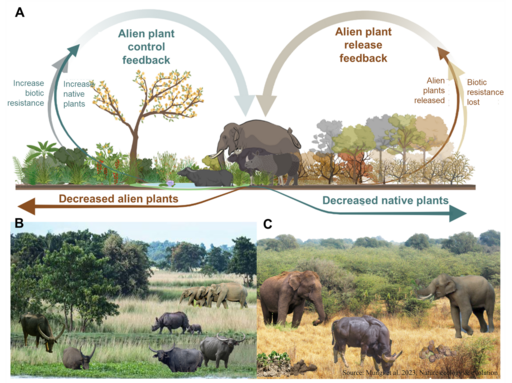
Ninad Avinash Mungi, Yadvendradev V. Jhala, Qamar Qureshi, Elizabeth le Roux and Jens-Christian Svenning
Link to paper in Nature Ecology & Evolution (Nat Ecol Evol)